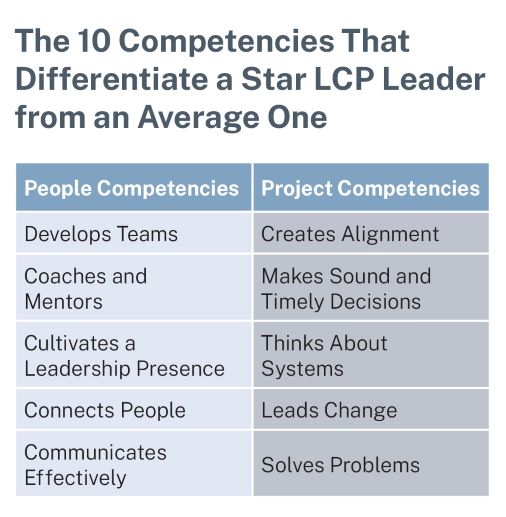Megaprojects: How Great Leaders Can Be the Difference Between Success and Failure

Large engineering and construction (E&C) projects nationwide continue to grow as a percentage of U.S. construction put in place (CPiP) are becoming increasingly more complex and geographically concentrated. A few years ago, FMI estimated that annual CPiP for projects larger than $1 billion would increase from $50 billion in 2018 to $350 billion in 2028, with the average project size climbing to $2.9 billion from $2.1 billion.
While this trend presents many opportunities, it also brings tremendous risk for project leadership. In the following paper, we discuss key differentiators that distinguish great leaders of large projects from average ones. Ultimately, these differences can make or break project success.
Not Your Average Project
When examining ways to increase the likelihood of success on large, complex projects (LCPs), those that are $250 million or above, it can be easy to immediately gravitate toward an operational or tactical lens. However, many LCP leaders we spoke with identified talent-related issues as one of the biggest challenges in delivering these projects.
LCPs, despite their high profiles, have not avoided the overarching talent problems that plague the construction industry. Most leaders of these types of projects are selected due to their track records of success. However, LCPs present a level of sophistication and complexity that can confound even the most successful project leaders.
During our research, we found that those organizations that had greater success on these projects typically put more intentionality around preparing and developing project leaders. The challenges surrounding leadership and talent on LCPs prompted several key questions for organizations considering this market. These include:
- What is different about this project, and what will this require from your project leader?
- How effective and deep is your current leadership bench for these LCPs?
- What criteria do you use to identify, assess and develop your project leaders for LCPs?
- What would happen if one of your key leaders on a LCP retired, quit or changed companies halfway through the project?
Mega: A New Definition
As FMI investigated the complications around delivering megaprojects on time and on budget, one major question began to surface: Why should a dollar amount be the sole qualifier of a project being considered a megaproject?
Depending on the size of a particular firm and the complexity, many projects present similar issues and risks as megaprojects but on smaller scales. Given that these challenges can be more universal, FMI redefined the way we think about megaprojects, shifting to calling them large, complex projects (LCPs). FMI defines LCPs as projects that are at least $250 million and have a minimum of three of these factors:
- Accelerated timelines.
- Set end dates.
- Multiple clients with different end users and stakeholders.
- Different teams delivering on many phases.
- Complicated contractual relationships, such as a multiparty joint venture.
- Design concurrent with construction.
- Peak demand for labor.
- New technical expertise.
Considering these critical questions and their increased importance to the E&C industry, FMI partnered with experts in the LCP space to explore what differentiates the standout LCP project leaders from average ones.
Through surveying and interviewing a diverse group of leaders, FMI developed a list of key skills and behaviors to identify, assess and develop successful LCP project leaders. While each project and situation may be different, and success can never be guaranteed, focusing on developing these competencies in your LCP leaders will increase the likelihood of successful outcomes.

These competencies can be used not only to assess and identify whether your current leaders are ready to take on an LCP, but also to coach and develop your next generation of managers. Having a focused list of specific behaviors creates more targeted development and accelerates readiness. Using assessment tools, such as 360-degree feedback with questions mapped to these specific behaviors, helps measure progress while providing experiential learning opportunities.
It is worth noting that the list above is not theoretical in nature; rather, the competencies listed have emerged in numerous examples of successful LCPs. For this article, we’ll highlight two examples to illustrate how these apply to the field.
Develops Teams
FMI defines the develops teams competency as someone who:
- Ensures teams work effectively together to achieve project objectives.
- Assigns tasks or roles that leverage everyone’s strengths and interests.
- Celebrates and rewards team achievements.
- Encourages others to collaboratively address conflict.
For example, one LCP leader talked about the importance of establishing partnering sessions to learn about the project’s roles, processes and metrics for success. “A lot of times t he owners don’t have t he time or patience, but the really good projects have leaders or owners who are really passionate about the commitment to have a successful project, and they share that commitment and share their vision and talk about what that will mean to be successful. At the end of it, everybody has a very clear vision of what their role is, the preferred outcome and what they needed to do to be part of that.”
Communicates Effectively
Another competency that was often highlighted was communicates effectively, which FMI defines as:
- Listening attentively to others.
- Communicating relevant information to the right people in a timely manner.
- Conveying ideas so that others listen.
- Utilizing all mediums to communicate and share information across the project.
Having project leaders who exemplify these behaviors can have a powerful impact on a high-performing LCP. “The problems we always saw were the result of breakdown in communication and decision making.”
The Importance of Developing Your Talent
It’s not enough just to focus on leadership competencies. You need to consider the careers of your talented people first and develop plans for helping them achieve their long-term goals within your organization.
As one successful LCP leader pointed out, “Let’s take a 30-year-old engineer, for example, who comes on as your lead process engineer on a project. How do you ask someone for a nine-year commitment to one project? You have to figure out a way that they won’t spend the whole project in that one role. You must think about where they should move next and what that would look like.”
Projects of this length require intentionality around talent development, succession planning and career advancement. As today’s workers have more career options, asking for a multiyear commitment on one project in the same role will likely cause retention issues.
As one executive said, “You have to take care of things like career management that you never thought you had to before. It’s obvious that these leaders have talent and won’t want to spend the entire project in that same role. You have to make career plans.”
At the onset of any LCP, creating clear, transparent succession plans and opportunities for advancement will help ease the burden of multiyear commitments. It’s important to talk about succession planning and career development, especially with your next generation of LCP leaders, so they understand what specific competencies and behaviors need focus.
While the challenge of talent development for LCPs has yet to be solved, we can work to develop critical competencies that improve the likelihood of successful projects.
To help you begin thinking about your leadership bench for upcoming LCPs, ask yourself:
- Who are your current LCP leaders, and what is your plan to prepare them to take on larger, more complex projects?
- What measures will you take to identify, assess and develop your talent?
- What is your plan for succession and career advancement of your key leaders on LCPs?
Having clarity on the questions above can reduce the potential for disaster and create a competitive advantage for those with a clearly defined talent strategy. Think of these competencies as ways to promote analysis and conversation. The more intentionally you create a talent development strategy for LCPs, the better chance you have of delivering exceptional results for your clients and the industry.

.png)

